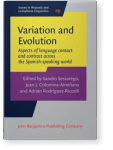Chapter 4
Evidentiality and epistemic modality in the Andean Spanish
verb
The aim of this chapter is twofold: first, it
assesses the discussion about evidentiality and epistemic modality
in the Andean Spanish verb as a set of hypothetical contact-induced
changes due to the influence of Quechua and Aymara, and, second, it
suggests new avenues for enhancing and strengthening this area of
research. In order to do this, it reviews the studies conducted
about the links between evidentiality and epistemic modality, on the
one hand, and verbal forms such as the pluperfect, the present
perfect, the future, and the subjunctive perfect correlated with
verbs in the present tense, on the other. The review focuses on
studies that address hypothetical contact-induced processes, since
its aim is to examine the arguments that relate these elements with
their possible Quechua and Aymara sources. The chapter suggests that
some of the Andean uses pertain to the epistemic modality terrain
(pluperfect for “non-experienced past” and present perfect for
“experienced past”), while others are included in the evidentiality
arena (inferential uses of the future forms), or plainly lack any
relationship with these dimensions (subjunctive perfect correlated
with verbs in the present tense).
Article outline
- 1.Introduction
- 2.Evidentiality, epistemic modality, and their complex
relationship
- 3.Evidentiality and epistemic modality in the Andean Spanish
verb
- 3.1Pluperfect
- 3.2Present perfect
- 3.2.1Two additional challenges
- 3.3Future forms
- 3.4Subjunctive present correlated with verbs in past
tense
- 4.Conclusions and further research
-
Notes
-
Glossary
-
References
